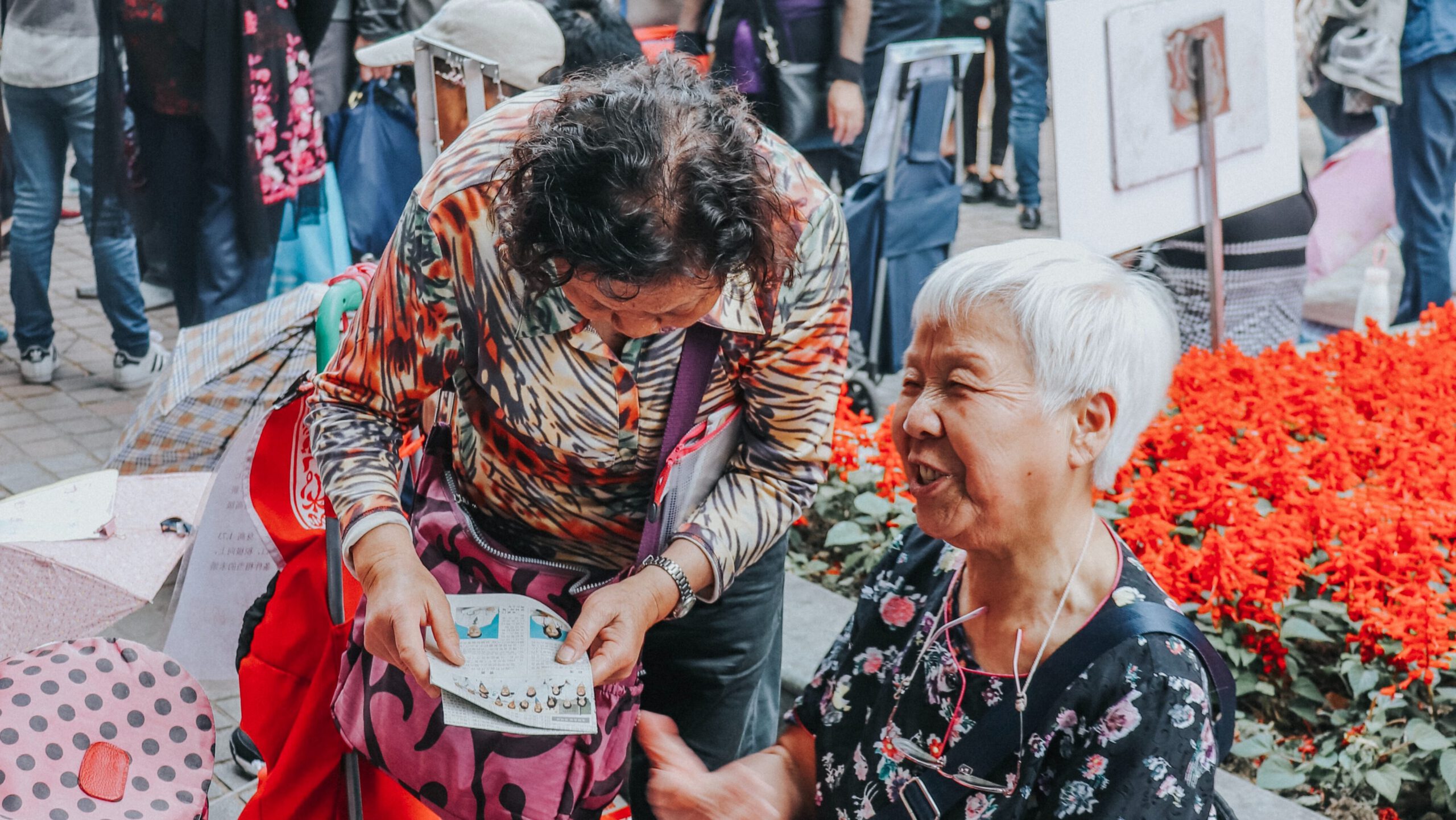In Poland, every year on the 26th of May, we celebrate a special day that is dedicated to our mothers. It is a holiday where we show our respect, appreciation, and love for the women who play such an important and challenging role in our lives.

Mother’s Day has been celebrated in Poland since 1914. The holiday took place for the first time in Krakow on May 26, 1914. It was celebrated on different dates before World War II. Since then, the holiday has always been celebrated on May 26, making Poland the only country in the world to celebrate Mother’s Day on this date.
In several countries, Mother’s Day coincides with International Women’s Day, which falls on March 8. The majority of countries, including the United States, Canada, Ukraine, Germany, Italy, and China, celebrate it on the second Sunday in May. In the United Kingdom, Ireland, and Nigeria, the holiday falls on the fourth Sunday of Lent. In Arab countries and the Middle East, Mother’s Day is often celebrated on March 21. It is celebrated on the last Sunday in May in France and Sweden. As you can see, each country has its own way of celebrating this day.
Mother’s Day in Poland
So, how do we celebrate in Poland? Well, in Poland, Mother’s Day is celebrated as a family holiday where children prepare heartfelt gifts for their mothers. These gifts may include handmade cards, drawings, messages of appreciation, flowers, and various other treasures that children offer to their beloved mothers. It’s also a day when children show off their creativity by singing songs, reciting poems, and putting on various performances.
↳ PRO TIP: Do you like traveling? Then before you buy any ticket or book an attraction, check if it's available in this worldwide Viator Database. You may save a lot of money and time. No need to thank me :)

Unlike some other countries, Mother’s Day in Poland is not a national holiday and does not fall on a weekend. This means that it is not a day off from work or school, which is unfortunate.
Origins of Mother’s Day
Mother’s Day can be traced back to a custom known as Mothering Sunday, which was celebrated in England and Ireland during the Middle Ages. It falls on the fourth Sunday of Lent, also known as Laetare Sunday. It was traditionally a day when people visited their „mother church,” the church in which they were baptized. This custom is still observed today. In centuries past, it was also a day when children would visit their parents and give their mothers violets, while special pastries such as rolls and cakes were prepared.
The idea to honor all mothers with a separate holiday came from the United States. At the beginning of the 20th century, a schoolteacher named Ann Maria Jarvis of Virginia began to fight for a holiday to recognize the hard work of mothers who devoted themselves to raising their children and running their households without receiving the proper appreciation. She called it Mother’s Labor Day. Upon her mother’s death, Jarvis worked to establish the holiday in her honor.
In 1907, the Andrews Methodist Episcopal Church in Grafton, West Virginia, held the first Mother’s Labor Day service, thanks to Jarvis’ initiative. (The church was later renamed the International Mother’s Day Sanctuary.) The idea quickly caught on, and within three years, Mother’s Labor Day was celebrated across the United States.
Mother’s Day in Other Countries
As it is international holiday, Mother’s Day is celebrated in almost every country in the world. But surprisingly, there is no common date for its celebration. Each country has its own unique way of recognizing this special day.
Mother’s Day in the United States of America
In the United States, Mother’s Day is celebrated on the second Sunday in May and is a national holiday. To mark the occasion, flags are flown in front of homes and government buildings, while events and family picnics are organized in cities and towns across the country.

Credit for the popularity of Mother’s Day in the U.S. goes to Ann Maria Reeves Jarvis, as you have already learned.
Mother’s Day in England
Although Mother’s Day was a well-known and highly regarded occasion in ancient times, it was forgotten in later eras. It wasn’t until the seventeenth century in England, and later in Scotland, that people began to remember the important role of mothers.
Mother’s Day is still celebrated on the fourth Sunday of Lent. On this special day, both children and adults spend quality time at home with their families. In the past, even prisoners serving sentences for minor offenses were given a day off, and soldiers were sent home to be with their families whenever possible.
Even children who had been sent to work on the estates of wealthy families would return home to celebrate the day with their families. They were spoiled with special pastries, exquisite meals, and other dellicacies. Nowadays, the favourite way of showing appreciation to English mothers is to take her out to a nice restaurant or treat her to a relaxing spa.
Mother’s Day in Spain
In Spain, this holiday has always been associated with the religious feast of the Immaculate Conception of the Blessed Virgin Mary, which falls on December 8th. For centuries, the people of Spain have paid tribute to both the Virgin Mary and to their own mothers on this day.

It wasn’t until 1965 that the two celebrations were separated and Mother’s Day was moved to the first Sunday in May. Even then, the holiday was still tied to religion. Please note, that may is considered the month of Mary in Spain. Despite its religious origins, Mother’s Day in Spain, as in other countries, has become a highly commercialized holiday. Mothers are given small handmade gifts, flowers and chocolates.
In the northern region of Spain, it is common to serve mothers breakfast in bed. Mothers often prepare the food the day before and then pretend to be amazed at their children’s culinary talents, as obviously children are not known for their cooking skills.
Mother’s Day in Mexico

In Mexico, Mother’s Day is a religious holiday and, like most Mexican holidays, is celebrated in churches and chapels. When the mothers return home from church, they are given a well-deserved break from their daily routines. Fathers prepare dinner, and children help clean up and entertain their mothers with poetry, games, or just reading books together. Families spend quality time together. They enjoy each other’s company and have fun.
Mother’s Day in Germany
This holiday in Germany is celebrated on the second Sunday in May. Although it was first celebrated in 1922, it didn’t become a national holiday until 1932.
During the time of the Third Reich, Mother’s Day had great significance in Germany. The German mother was put on a pedestal, and it was believed that the future of a great Germany rested in her hands. Today, however, it is a warm and family-oriented holiday. Mothers in Germany receive giftes and flowers as a symbol of love and respect. It is a day of appreciation and honor for the sacrifices that mothers do for their families.
Mother’s Day in India
In India, it is a vibrant and lively festival celebrated in October. It is associated with the worship of the mother goddess Durga, who symbolizes the care of the household and is depicted as an invincible warrior fighting demons.

On this day, mothers are not allowed to enter the kitchen or do any household chores. They are relieved of their responsibilities for the day. The rest of the family takes on these duties to show their appreciation and dedication of their mothers. It is also an opportunity for families to spend time together, often going out to restaurants or visiting friends. It is a colorful and joyful occasion, full of love and celebration.
Mother’s Day in Arab Countries
Here it is celebrated earlier than in European countries, on March 21. On this day, Arab mothers receive gifts and good wishes from their children. From the more mischievous children, they receive promises of a better behavior. It is also a tradition to have a picnic with the neighbors and friends of the family.

It should be noted, however, that not all Muslims celebrate Mother’s Day. Some more orthodox Muslims reject holidays from Western countries, believing that their own traditions are sufficient to support and honor mothers and wives. For those who do celebrate it, Mother’s Day is a time to show appreciation for the hard work and dedication of their mothers.
Mother’s Day in China
Like in many other countries, it falls on the second Sunday in May. However, it is not a national holiday and is not widely celebrated.

In Chinese homes, it is traditional to give mothers white lilies, which have a special meaning. Mothers plant them when their children leave home. Once the plant is strong and healthy, it is believed that mothers can sense how their children are doing. Giving these lilies is a meaningful gesture of love and appreciation for the important role mothers play in their families, even though Mother’s Day is not a major celebration in China.
Tips on How to Celebrate Mother’s Day in Poland
If you want to make this Mother’s Day unforgettable for your mom, you can try something beyond the usual flowers and chocolates. Instead of making her cook and clean as she does every day, take her to her favorite restaurant or invite her to a dinner party with friends where she will be the center of attention.
Another idea is to take a leisurely walk with your mom to a park or museum, or perhaps revisit some of the places you used to go together when you were younger. You can stop for coffee, ice cream, or cake at a nearby café.
Try to remember what your mom has always dreamed of doing but never had time to do, and make it happen for her. It could be something as simple as a relaxing day at the spa or as adventurous as a bike ride. You can also plan a reunion with some of her old friends and acquaintances.
Bibliography
- https://pl.wikipedia.org/wiki/Mi%C4%99dzynarodowy_Dzie%C5%84_Matki_Ziemi
- https://historiamniejznanaizapomniana.wordpress.com/2015/05/26/dzien-matki/
- https://historia.dorzeczy.pl/305707/dzien-matki-skad-wzielo-sie-to-swieto-ciekawa-historia.html




